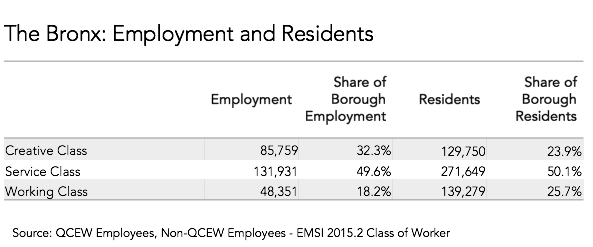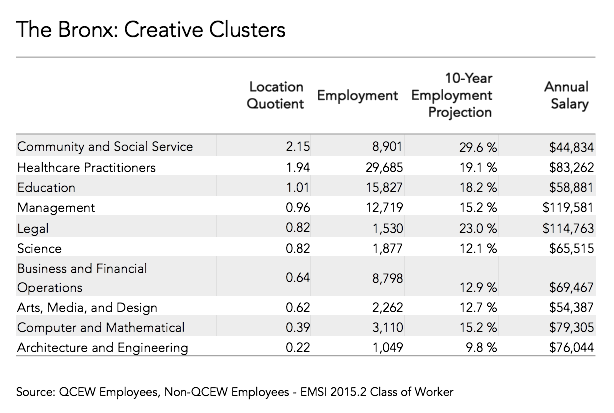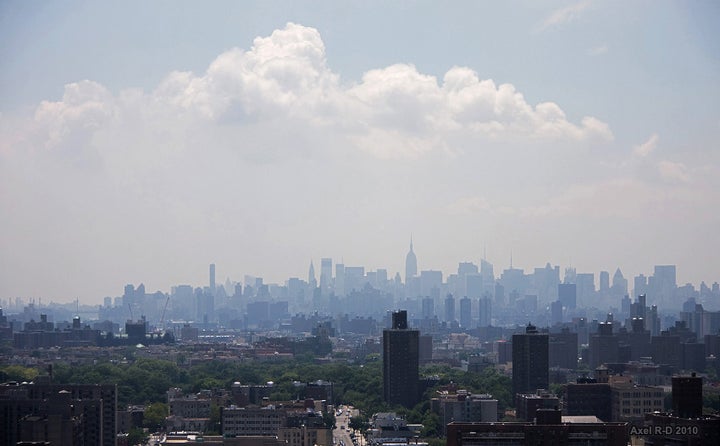
With its strong access to transit, the Bronx is attracting a new generation of residents.
New York’s strong economic recovery is breathing new life into the Bronx. As Manhattan and Brooklyn struggle to cope with housing affordability, more and more people are moving to the Bronx, enticed by its strong transportation access and affordable housing stock.
In 2015 alone, more than 13,500 people relocated to the Bronx. Since 2010, the borough’s population has increased by 70,300 people, or 5.1 percent. The Bronx has led not just the city of New York, but also the entire state, in terms of growth. Just this year, the New York Times recounted the significant amount of investment being made in the borough. A few years earlier, The Real Deal dubbed this trend “The Bronx Feeding Frenzy,” describing how investors flocked to the borough, “spending millions to get in on the city’s next real estate frontier.”
With the hopes of better understanding the Bronx’s future economic potential, my colleague Richard Florida from the NYUSPS Schack Institute of Real Estate Urban Lab and I explored the Creative Class structure of the borough, looking at both employees and residents. In previous weeks, I have summarized our findings for Manhattan, Brooklyn and Staten Island. A more complete version of this week’s analysis of the Bronx is available here.

The Bronx’s Creative Class—workers who make a living using their minds, whether in science, technology, law, and medical industries, or academia, media, management, and finance—contains just over 86,000 workers, or about 32 percent of the borough’s workforce. On average, creative workers in the Bronx earn an annual salary of $77,875 per year—4 percent more than those working in Brooklyn. Just two out of every ten residents in the Bronx—around 130,000 workers—are members of the Creative Class.
The Bronx’s creative workforce pales in comparison to the size of its Service Class, which consists of routine jobs in food preparation and service, retail trade, personal care, and clerical and administrative positions. With 132,000 employees, the Service Class accounts for nearly half of the Bronx’s workforce, or approximately 272,000 residents. Service workers in the Bronx earn just $30,400 annually—34 percent less than those working in Manhattan.
While many still think of the Bronx as a manufacturing center, the Bronx’s Working Class accounts for just 18.2 percent of its total workforce—50,000 workers. Members of the Working Class in the Bronx earn an average annual salary of $39,000—more than the Service Class, but just half the average salary of the Bronx’s Creative Class. Altogether, an estimated 140,000 blue-collar workers call the Bronx home—around 25.7 percent of the borough’s total residents.
The Bronx’s Creative Clusters
While dominated by the Service Class, the Bronx boasts a number of competitive strengths in the creative economy. The chart below breaks down the borough’s creative clusters by employment, ten-year projection, annual salary, and location quotient.

Like the creative economy in Brooklyn, Queens, and Staten Island, the Bronx’s creative economy is driven by health care and education occupations, or so-called “meds and eds.” This is not surprising, given the presence of large anchor institutions such as Montefiore Medical Center and Fordham University. Taken together, health care, social services, and education occupations account for six in ten Creative Class workers in the Bronx.
“While dominated by the Service Class, the Bronx boasts a number of competitive strengths in the creative economy.”
With nearly 30,000 employees, Healthcare Practitioners is by far the largest creative cluster in the Bronx, and one of the borough’s few competitive advantages. With an LQ of 1.94, the Bronx’s share of Healthcare Practitioners is nearly twice the national average. Across all five boroughs, this is the third highest concentration for a creative cluster. Over the next decade, the Bronx’s Healthcare Practitioners cluster is projected to grow by more than 19 percent.
The borough’s Education cluster has approximately half as many employees (16,000) as Healthcare Practitioners, although its share is nearly on a par with the national average (LQ 1.01). Education professionals in the Bronx earn 30 percent more than their Healthcare Practitioner colleagues, with an annual salary of around $59,000.
Because they are often linked to the Bronx’s strong “meds and eds” cluster, Community and Social Service jobs are highly concentrated in the borough. Though the cluster accounts for less than 9,000 workers, its LQ (2.15) is more than twice the national average. This skill cluster is expected to grow by another 30 percent in the next decade (the fastest growth rate of any creative cluster).

Many real estate developers are pouring investment dollars into the Bronx.
Beyond the “med and eds” occupational clusters, Management is the third largest cluster, employing approximately 12,700 employees. Management salaries are the highest of all ten creative clusters in the Bronx, averaging nearly $120,000 per year. Business and Financial Operations adds an additional 8,800 employees, although this share is well below the U.S. average (LQ 0.64).
The rest of the Bronx’s creative skills clusters have less than 3,500 employees and are smaller than the national average. Both the Legal and Science clusters, for instance, are 18 percent smaller than the U.S. average (LQ 0.82). With just over 1,800 employees, Legal is slightly larger than Science, which accounts for some 1,500 employees. Legal workers in the Bronx also earn far more than Science employees—nearly $115,000 a year compared to $65,000 for the borough’s science workers.
The Bronx’s Arts, Media, and Design cluster may not be the smallest, but it has seen some of the slowest growth in recent years. From 2011 to 2015, the cluster did not grow at all. In the coming decade, it is expected to grow by just 12.7 percent. With an annual salary of less than $55,000, Arts, Media, and Design also has the second lowest salary of any creative cluster in the Bronx. The borough’s smallest cluster, Architecture and Engineering, has an annual salary of approximately $76,000, despite its less than 1,100 employees.
Despite its strength in health care and education, the Bronx remains heavily dependent on its Service and Working Class sectors. Although the pendulum seems to be swinging back in the borough’s favor, the future success of the Bronx depends on growing and diversifying its limited creative economy.
